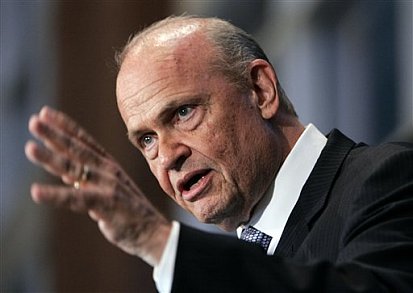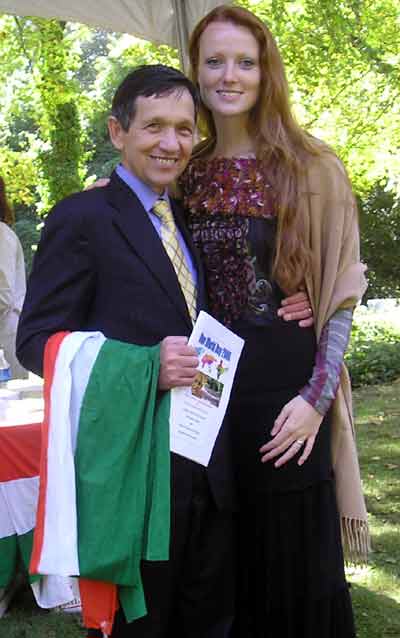
IT is probably not to his advantage that Mitt Romney’s clean-scrubbed, youthful presence so readily reminds voters of those earnest Mormon missionaries knocking on their doors.
If it were almost any other church, a missionary past would most likely be an asset for a presidential candidate. To have spent two years in mission work after high school is a sign of early and admirable idealism, commitment and strength of character.
But to many American Christians, those friendly Mormon missionaries embody exactly what they fear and resent about Mormonism. And Mr. Romney, after nearly a year of graciously sidestepping invitations to a theological duel, may have engaged it despite himself last week by giving a speech on faith the likes of which hasn’t been heard since John F. Kennedy took on voters’ fears of Catholicism in 1960. While Mr. Romney uttered the word “Mormon” only once, he jump started the discussion about what makes Mormonism problematic for some Americans.
From the start of the Church of Jesus Christ of Latter-day Saints in upstate New York 180 years ago, missionaries have been spreading the message that Christianity lost its way and Mormonism restores the Christian church to its rightful path. The first prophet of Mormonism, Joseph Smith, essentially threw down the gauntlet to the other churches. He was killed at the hands of a mob.
But the prophet begat apostles, and their converts begat converts — energetic, courageous types who ventured as far as Hawaii, England, Brazil and Tonga to evangelize. Today, the church counts more than 12 million members, of whom about 5.5 million are Americans. Internationally, about 70 percent of Mormons are converts.
But to many American Christians, those friendly Mormon missionaries embody exactly what they fear and resent about Mormonism. And Mr. Romney, after nearly a year of graciously sidestepping invitations to a theological duel, may have engaged it despite himself last week by giving a speech on faith the likes of which hasn’t been heard since John F. Kennedy took on voters’ fears of Catholicism in 1960. While Mr. Romney uttered the word “Mormon” only once, he jump started the discussion about what makes Mormonism problematic for some Americans.
From the start of the Church of Jesus Christ of Latter-day Saints in upstate New York 180 years ago, missionaries have been spreading the message that Christianity lost its way and Mormonism restores the Christian church to its rightful path. The first prophet of Mormonism, Joseph Smith, essentially threw down the gauntlet to the other churches. He was killed at the hands of a mob.
But the prophet begat apostles, and their converts begat converts — energetic, courageous types who ventured as far as Hawaii, England, Brazil and Tonga to evangelize. Today, the church counts more than 12 million members, of whom about 5.5 million are Americans. Internationally, about 70 percent of Mormons are converts.
“His candidacy alone has been a long infomercial for the Mormon cult,” said Bill Keller, an evangelist in Florida who runs an Internet prayer network. “As president he’s going to carry the influence of that office, not just here but worldwide, and there’s no denying it’s going to lead people to check out that religion, which according to biblical Christianity, will lead them ultimately to hell.”
The church has walked a fine line for years between emphasizing what it has in common with traditional Christianity and not shying away from its distinctions. (The church’s own explanations of its beliefs, of course, differ from those of its detractors.) Realizing that having a Mormon run for president would raise questions, the headquarters in Salt Lake City posted explanations of church history and doctrine on its Web site. The church does not endorse candidates.
The rhetoric of those like Mr. Keller is extreme, and his use of the term “cult” naturally offends Mormons and others. But he is voicing feelings shared by Christians in other denominations who fret that a Mormon presidency could attract converts to a faith they perceive as a heretical rival.
The rhetoric of those like Mr. Keller is extreme, and his use of the term “cult” naturally offends Mormons and others. But he is voicing feelings shared by Christians in other denominations who fret that a Mormon presidency could attract converts to a faith they perceive as a heretical rival.
In the 1840’s we immediately responded in kind and accused Mormonism of being Satanic and inspired by the devil,” Dr. Mouw said. “So you have basically 170, 180 years of harsh, angry, denunciatory rhetoric between the camps that has set the whole tone.”
Today there is no armed mob, but there remains a complex brew of fear, ignorance and hostility about Mormonism. The ignorance itself should not be underestimated: it is surprising how many Mormons say they have been mistaken for Amish. Polygamy remains an issue, even though the church disavowed it 117 years ago. Racism is also an issue, since it was not until 1978 that the church opened its priesthood to blacks. But don’t forget that it was only in the 1990s that many Southern churches asked forgiveness for their segregationist stance — and received it.
Today there is no armed mob, but there remains a complex brew of fear, ignorance and hostility about Mormonism. The ignorance itself should not be underestimated: it is surprising how many Mormons say they have been mistaken for Amish. Polygamy remains an issue, even though the church disavowed it 117 years ago. Racism is also an issue, since it was not until 1978 that the church opened its priesthood to blacks. But don’t forget that it was only in the 1990s that many Southern churches asked forgiveness for their segregationist stance — and received it.
By LAURIE GOODSTEIN
Published: December 9, 2007
Published: December 9, 2007




























No comments:
Post a Comment